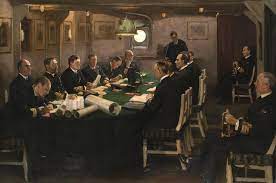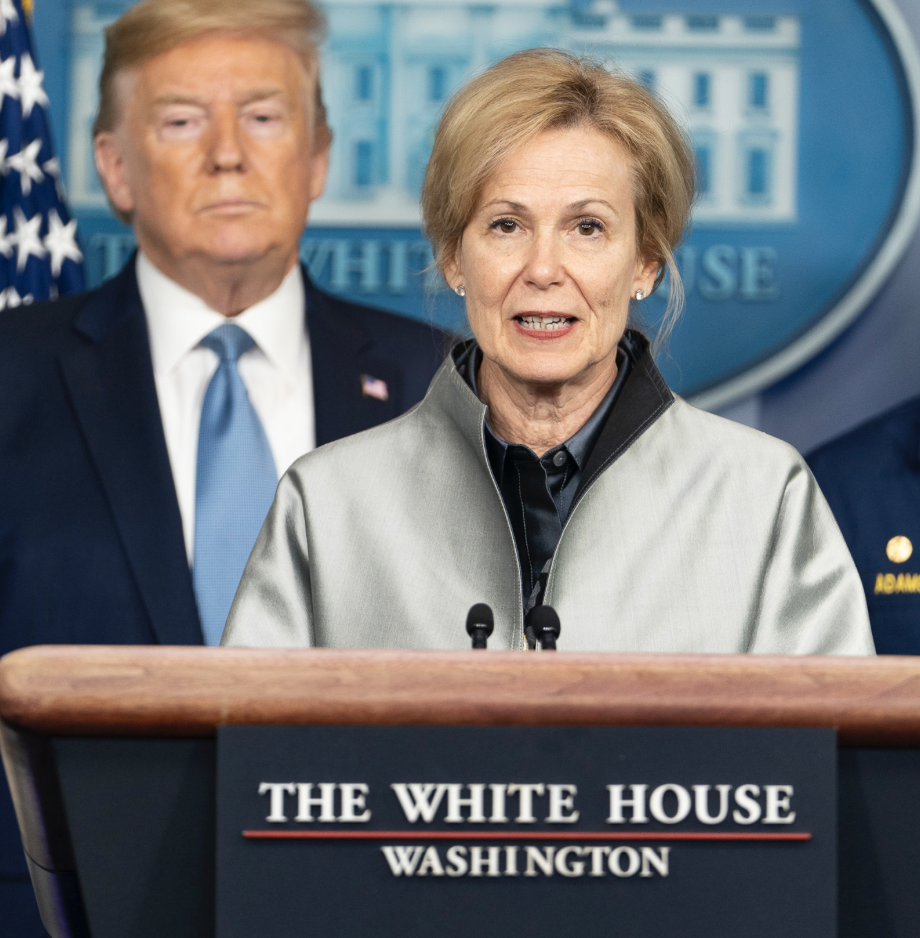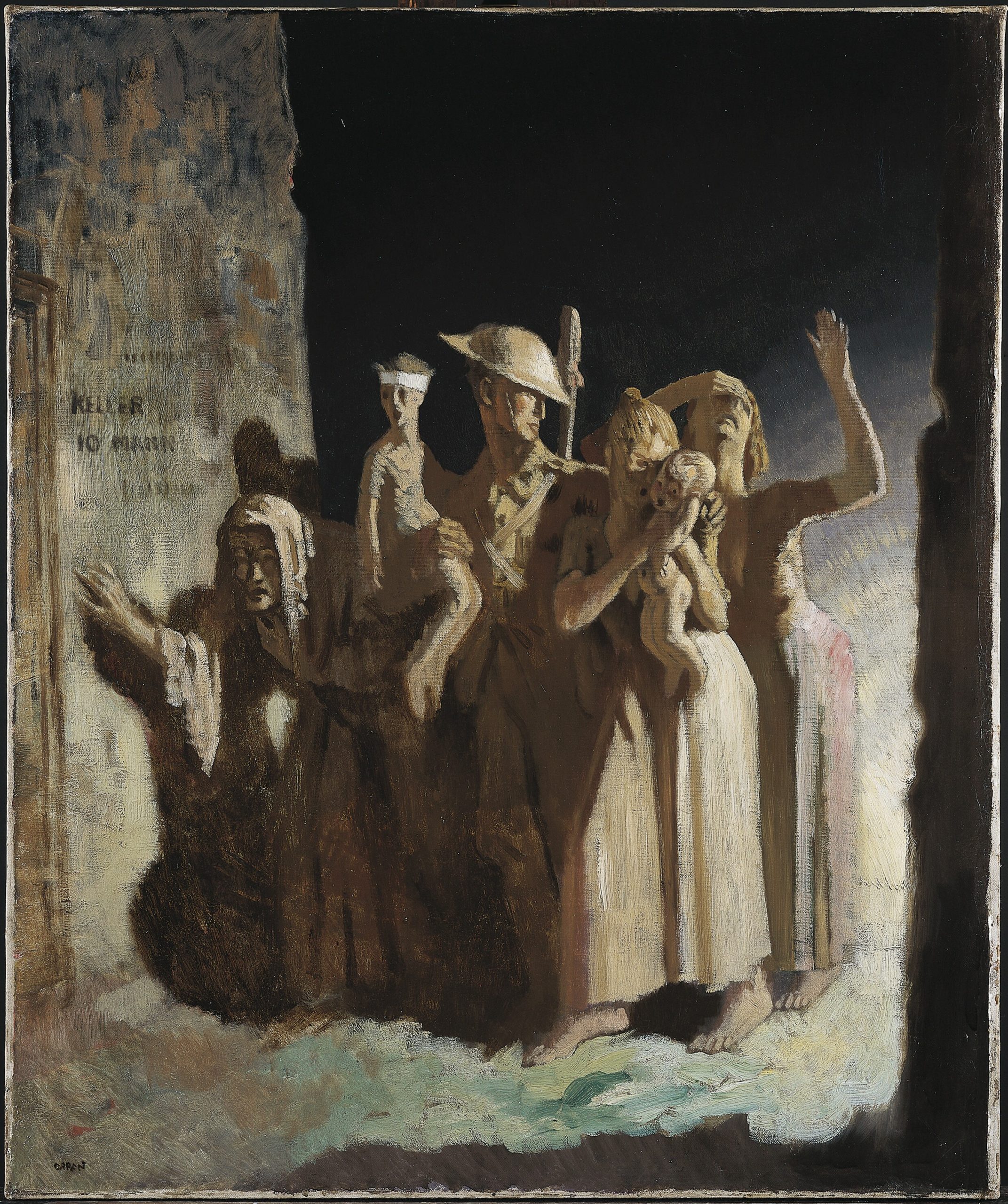Month: September 2021
Thursday assorted links
1. Claims about paid leave (NYT). How come no one is willing to compare it to just giving families the cash? Somehow that question is not part of “the science” for this one.
2. Are Indians getting shorter?
3. Measurement of construction productivity.
4. Does pre-K improve child achievement?
Jobs for Sale: Corruption and Misallocation in Hiring
Corrupt government hiring is common in developing countries. This paper uses original data to document the operation and consequences of corrupt hiring in a health bureaucracy. Hires pay bribes averaging 17 months of salary, but contrary to conventional wisdom, their observable quality is comparable to counterfactual merit-based hires. Exploiting variation across jobs, I show that the consequences of corrupt allocations depend on the correlation between wealth and quality among applicants: service delivery outcomes are good for jobs where this was positive and poor when negative. In this setting, the correlation was typically positive, leading to relatively good performance of hires.
That is from a new AER paper by Jeffrey Weaver.
You people are crazy
So, I decided to attempt a measurement to quantify this phenomenon. On Wednesday, September 22nd, in the 1:00 pm hour, I observed 400 Stanford cyclists on Lasuen Mall, a popular campus street for bicycles. I simply noted whether each cyclist wore a mask, a helmet, neither, or both. Here are the final tallies:
Total cyclists: 400 – (100%)
No mask, no helmet: 195 – (49%)
Mask, no helmet: 134 – (34%)
Helmet, no mask: 42 – (10%)
Mask and helmet: 29 – (7%)
That works out to a masking rate of 41% and helmet-wearing rate of 17%. So, Stanford students are about twice as likely to wear a mask on a bicycle as a helmet. To be certain, there’s a margin of error here — I can only count so many cyclists at a time, and I’m sure I missed some. But the point stands that at one of America’s leading research universities, students wear masks on bicycles at a higher rate than they wear helmets.
Here is the full article by Maxwell Meyer.
Who are the best Irish artists?, part II on John Lavery
John Lavery (1856-1941, born North Belfast, Catholic) is perhaps the most classic pick for Ireland’s greatest artist, though he is not my personal pick. He did, however, create many of Ireland’s most beloved and I would say most typical paintings. It is difficult to keep him out of your top three. Although he moved to Scotland as a child, and then to England, his works captured the Ireland of the period very well. He also was tangentially involved in Irish politics, mostly as an intermediary and negotiator, and he died in Ireland while escaping the Blitz, thereby cementing his Irish credentials just a wee bit.
Consider this work, in the Hugh Lane Gallery in Dublin, a portrait of his own wife sketching, more luminous when you see it live:
 Here is “Michael Collins (Love of Ireland)”:
Here is “Michael Collins (Love of Ireland)”:
 There is a consistent depth and classiness to his work.
There is a consistent depth and classiness to his work.
Like William Orpen, Lavery also was an official artist for WWI, commissioned by the British. His crowd and war room scenes were the best of that lot:
 He was born on St. Patrick’s Day, ended up an orphan, and his wife Hazel later taught Winston Churchill how to paint. John Lavery painted his Hazel — actually born an American — onto Irish currency notes, where she remained for fifty years until the advent of the euro. It was widely rumored that Michael Collins was the love of her life, and that she had affairs.
He was born on St. Patrick’s Day, ended up an orphan, and his wife Hazel later taught Winston Churchill how to paint. John Lavery painted his Hazel — actually born an American — onto Irish currency notes, where she remained for fifty years until the advent of the euro. It was widely rumored that Michael Collins was the love of her life, and that she had affairs.
Top paintings by Lavery might auction for about one million pounds, much cheaper than say a Warhol. Is that a form of aesthetic arbitrage? Or are you just paying less for a less important and also less liquid asset, appreciated by many fewer people?
Does a Lavery look good in your Miami Beach contemporary home? Does it get you dates? But doesn’t he represent a whole country? How did he do that by spending so little time there? That too is part of the magic of art.
*Ich bin dein Mensch*
The English-language title is the somewhat different “I’m Your Man,” as Mensch is a more universal and less gendered concept. The premise is that a researcher woman is to spend three weeks with a robot man, possibly romantically, and then report back on the experience. I thought this was a “good enough” AI movie, better than most American reviews are indicating. Here are some links. The first hour was quite good, with subtle German jokes about surveillance paranoia and grammar reform, among other matters. It is partly about the German national character, and how difficult it is to fit together its earlier and current forms. Then for a while the movie runs out of steam, though with a nice close. I took the final message to be that older men and those content with inauthenticity will be the big winners from advanced AI and robots. That might just be right.
Why isn’t there more debate over the Biden economic plan?
That is the topic of my latest Bloomberg column, here is one bit:
My colleague Arnold Kling put it well: “With the reconciliation bill, there is no attempt to convince the public that it is desirable to enact an enormous child tax credit or to mandate ending use of fossil fuels in a decade. Instead, what we read is that if you’re on the blue team you want the number to be 3.5, but a few Democrats are holding out for something lower.”
The Democrats say they might be considering a carbon tax to fund their spending plans, and also to address climate change. You might have expected this news to be on the front page every day, and a dominant topic on Twitter and Substack. Isn’t the fate of the planet at stake, or perhaps an economic depression, depending on your point of view?
There was a lengthy and well-done article in the Washington Post on the political risks associated with this plan. It appeared on Page A21 of the paper edition.
And:
The contrast with earlier but still recent times is obvious. As recently as Barack Obama’s presidency, there was a vigorous policy debate on just about every proposal. A fiscal stimulus of $800 billion? That one was hashed out for months, with detailed takes on the multiplier, the liquidity trap and the marginal propensity to consume, coming from all points of view. Then there was Obamacare, which led to even more passionate and detailed debate over the course of years. Who didn’t have an opinion about the “Cadillac tax” or the proper size of the mandate penalty?
And why has this shift occurred?:
One possibility is that the substantive conversations are occurring on private channels, such as WhatsApp, or in person. This leaves the public sphere a relatively empty shell. Another possibility, more depressing yet, is that the main debate is now about political power and tactics, rather than policy per se. Squabbles over symbols are more common than disagreements over substance, and the influence of various interest groups matters more than the strength of any argument.
Another possibility I did not mention is that perhaps (since DT?) the news cycle has been shifting so rapidly that it no longer very easily sustains this older-fashioned style of ongoing debate? What might some other reasons be?
Wednesday assorted links
1. Microsoft Taj Mahal no Straussian readings allowed.
2. Evictions have not skyrocketed.
3. Claims about overrated and underrated historical events. Interesting, though I think he is quite wrong about ancient Greece and Rome.
4. Deriving Covid heterogeneity. And is Africa more protected?
5. Beethoven’s AI-finished 10th symphony, with a 3:38 clip at the end of the piece. Eh.
6. A guy who works full-time within VR.
7. Mortality: “Power calculations make it implausible that there is an upper bound below 130 years.”
Revisionism on Deborah Birx, Trump, and the CDC

In October of 2020 Science published a long article by Charles Piller titled Undermining CDC with the subtitle “Deborah Birx, President Donald Trump’s COVID-19 coordinator, helped shake the foundation of a premier public health agency.” The article focuses on a battle between Deborah Birx and the CDC over collecting data from hospitals with the basic message that Birx was an arrogant Trump tool who interfered with the great CDC. One year later, much of the article has a different cast beginning with “premier public health agency”. Hmmpfff. The opening now reads to me as almost laughable:
Zaidi lifted her mask slightly to be heard and delivered a fait accompli: Birx, who was not present, had pulled the plug on the Centers for Disease Control and Prevention’s (CDC’s) system for collecting hospital data and turned much of the responsibility over to a private contractor, Pittsburgh-based TeleTracking Technologies Inc., a hospital data management company. The reason: CDC had not met Birx’s demand that hospitals report 100% of their COVID-19 data every day.
According to two officials in the meeting, one CDC staffer left and immediately began to sob, saying, “I refuse to do this. I cannot work with people like this. It is so toxic.” That person soon resigned from the pandemic data team, sources say.
Other CDC staffers considered the decision arbitrary and destructive. “Anyone who knows the data supply chain in the U.S. knows [getting all the data daily] is impossible” during a pandemic, says one high-level expert at CDC. And they considered Birx’s imperative unnecessary because staffers with decades of experience could confidently estimate missing numbers from partial data.
“Why are they not listening to us?” a CDC official at the meeting recalls thinking. Several CDC staffers predicted the new data system would fail, with ominous implications. “Birx has been on a months long rampage against our data,” one texted to a colleague shortly afterward. “Good f—ing luck getting the hospitals to clean up their data and update daily.”
Scott Gottlieb tells this same story very differently in Uncontrolled Spread (my WSJ review).
Deborah Birx convinced the Coronavirus Task Force to direct money to the CDC to modernize its reporting of the COVID hospital data, but the CDC said no.
…The federal government had bought the entire available supply [of remedsivir], and HHS needed to know where to ship its limited doses [but]…the CDC didn’t have actual data on who was currently hospitalized for COVID, just estimates built off a model….Birx said that the government couldn’t ship scarce doses of the valuable medicine to treat estimated patients that were hypothetically hospitalized according to a mathematical formula. So she gave hospitals an ultimatum. If they wanted to get access to remedsivir, they would need to start reporting real data on the total number of COVID patients that they admitted each day. Hospitals quickly started to comply…Rather than cajole the CDC into fixing its reporting system, Ambassador Birx and Secretary Azar decided to recreate that structure outside the agency. The had concluded that getting the CDC to change its own scheme, and abandon its historical approach to modeling these data, would have been too hard.
…Under the new reporting system, 95% of US hospitals soon provided 100 percent of their daily hospital admission data. In an unfortunate twist, the CDC declined to work with the new data, worrying that since it wasn’t their data, they couldn’t assure its providence and couldn’t fully trust its reliability. As one senior HHS official put it to me, the CDC “took their ball and went home.”
…The cofounders of the COVID Tracking Project, one of the most authoritative and closely watched enterprises to report bottom-line information about the pandemic, would later say of the [HHS/Teletracking data], “the data set that we trust the most–and that we believe dose not come with major questions–is the hospitalization data overseen by the Department of Health and Human Services. At this point, virtually every hospital in America is reporting to the department as required. We now have a good sense of how many patients are hospitalized with COVID-19 around the country.” [Link here, AT]
Gottlieb’s story strikes me as much closer to the truth. Why? Notice that on most of the facts the stories agree. Gottlieb says the CDC refused to work with the HHS data and took their ball and went home. The Piller story has CDC people sobbing, angry, and saying “I refuse to do this.” Check. What differs is the interpretation and everything in Piller’s story is infected by an anti-Trump perspective. I don’t blame Piller for being anti-Trump but Trump plays no role in the story he just hovers in the background like a bogeyman. Piller says, for example:
…Birx’s hospital data takeover fits a pattern in which she opposed CDC guidance, sometimes promoting President Donald Trump’s policies or views against scientific consensus.
“Fits a pattern.” Uh huh.
Birx sometimes “promoted President Donald Trump’s policies.” Promoting the policies of the President of the United States? Why that’s practically treason!
Promoting views that go “against scientific consensus” Yeah, the “scientific consensus” of workers at the CDC.
Trump obviously had no interest in how hospital data was collected yet he is portrayed throughout as the hidden puppeteer behind the story.
Gottlieb’s story removes Trump from the equation and that rings true because we now know that the Biden administration has been as frustrated with the CDC as was the Trump administration. Politico writes, for example:
…senior officials from the White House Covid-19 task force and the Food and Drug Administration have repeatedly accused CDC of withholding critical data needed to develop the booster shot plan…
…the CDC advisory committee episode in late August only reinforced perceptions in the [Biden] White House that the agency represents the weakest link in a Covid-19 response…
The agency has for years struggled with obtaining accurate disease data from state health departments, and the pandemic strained the country’s public health infrastructure, causing massive delays in reporting and case investigation.
Withholding critical data. Struggling to obtain accurate data. Massive delays. Sound familiar? Indeed, if these parallels weren’t enough we even have CDC Director Rochelle Walensky overruling CDC scientists to allow boosters–but Walensky, unlike Birx, gets the benefit of the doubt so the story isn’t sold as Walensky going against scientific consensus to promote President Biden.
Evaluations of Trump colored evaluations of all the people and policies of the Trump administration leading to reporting that was sometimes unjust and inaccurate. It will take time to sort it all out.
Why don’t elite colleges expand supply?
Peter Q. Blair (Harvard) and Kent Smetters (U. Penn) have a new paper based on that question, here is the abstract:
While college enrollment has more-than doubled since 1970, elite colleges have barely increased supply, instead reducing admit rates. This study shows that straightforward reasons cannot explain this behavior. The authors propose a model where colleges compete on prestige, measured using relative selectivity or relative admit rates. A key comparative static of the model is that higher demand decreases [increases] the admit rate when the weight on prestige is above [below] a critical value, consistent with experience in elite [non-elite] colleges. A calibrated version of the model closely replicates the pattern in the data of declining admit rates at elite colleges while counter-factual simulations without prestige fail. Prestige competition is inefficient. Allowing elite colleges to collude on admissions strategy internalizes the non-pecuniary prestige externality and is Pareto improving.
My answer is slightly different. I do not doubt that the postulated enrollment selectivity constraint binds in the short run. Nonetheless, I think if most of the top schools really wanted to take in more students, they could do a mix of “recalibrating” the data and lobbying the college raters in such a way that would allow larger classes to happen with little or no reputational penalty.
The true constraint is the faculty. Let’s say Harvard tried to grow by 3x. They would have to hire many new professors, and those are people who could not currently obtain tenure at Harvard. (Harvard could lure those people in, and afford them, right now, but they don’t.) So Harvard tenure standards would have to fall. In addition to tolerating these “lower standards,” the current interest groups controlling Harvard departments would find their power greatly diluted by all these newcomers. And so it doesn’t happen. When “self-interest” and “high standards” coincide in the academic world, it is very difficult to defeat that. At least on academic matters, faculty governance really is the order of the day at top universities.
And so the classes at most top universities stay small. By the way, a potential faculty expansion wouldn’t even have to be with tenure and voting rights. Say Harvard econ would invite in 15 dissident economists, of varying sorts, on “long enough to carry them to retirement” sorts of “no voting rights” contracts. Those people would teach, go to seminars, and in general liven up the environment and bring greater intellectual diversity. They would over time become a force and influence of their own. And so it ain’t gonna’ happen. Harvard has to stay relatively small.
So don’t believe them the next time faculty at top schools tell you they are egalitarian. They are not with their own resources at least, though they are happy to play the game with the resources of others.
Jesse Shapiro, MacArthur fellow
Economist, Brown University. Citation:
Devising new frameworks of analysis to advance understanding of media bias, ideological polarization, and the efficacy of public policy interventions.
Here is previous MR coverage of Jesse Shapiro. Here is Jesse’s home page. (He is also partner of economist Emily Oster.)
Here are the other winners. Congratulations!
Tuesday assorted links
1. Was Hari Seldon an economist?
2. No, it’s not Munich 1938 — can you place the accent?
3. Charlie Baker weaves enormous nests for humans (in Uruguay).
The world China wants China fact of the day
After years of escalating pressure, last November Chinese diplomats in Canberra warned that to enjoy better relations with Beijing, Australia’s government must address 14 Chinese grievances. It must, among other things, stop funding “anti-China” research, refrain from provocative actions like requesting a more thorough World Health Organization investigation of the origins of Covid-19, stop opposing strategic Chinese investments into Australia, and block private media outlets from publishing “unfriendly” news stories about China.
Here is more from the WSJ, mostly about Aukus, via BM.
Daniel Gross and Auren Hoffman podcast on talent
Self-recommending, here goes! DG — “I think funny people are really underrated!”
Who are the best Irish artists?, part I on William Orpen
During my recent trip to Dublin and the UK I tried to make a systematic go of learning more about Irish art, mostly by looking at it more systematically. I’ll do a multi-part series about the best Irish painters, noting that hardly anyone outside of Ireland seems to follow Irish art. That is a shame, as it is a greatly underrated area, as most things are once you get to know more about them. Overall, I think of it as a fairly conservative form of modernism, subtle in its attachments to Ireland, and on the aesthetic side lacking in manifestos and foot-stomping. It is perhaps a better introduction to “the Irish spirit” than the more familiar yet also more exotic and mannered gateways of Joyce and W.B. Yeats.
Let’s start with…
William Orpen, 1878-1931, born County Dublin but mostly worked in London.
His best work is of World War I, as he was stationed by the British government as a war artist in France. His perspective on war was critical and penetrating, but not maudlin. It is striking how many sides of the war experience he portrayed, not just fighting, but soldiers walking through towns, German planes circling overhead, abandoned trenches, lone soldiers sitting, a deserter being interrogated, and much more. It is one of the most significant human attempts to depict the multi-faceted sides of war.
This body of work does not receive more recognition, perhaps because it panders to neither anti- nor pro-war types, nor to Irishmen, nor to Englishmen. Orpen’s war work made him a painter without a clear constituency. Here is a good survey of his war work. Note also that much of it is owned by Imperial War Museum in England, so the reputation of these works has not been “equitized,” namely there are few private collectors or galleries to talk up its value. His genius was not widely recognized until the 1980s.
I think of Orpen’s war work as critical of the modernist “machine aesthetic,” well ahead of his time in seeing where it would lead. He is plaintive and tragic, yet accepting of the rules of social convention, including those of war.
 There are many more wartime images here. Here is one soldier:
There are many more wartime images here. Here is one soldier:
 Here is one of the military portraits, full of character and it understands how the soldiers on the other side would never quite look like this:
Here is one of the military portraits, full of character and it understands how the soldiers on the other side would never quite look like this:
 Orpen did support the British war effort and found that returning to Ireland after WWI was not an appealing option, given the civil war and pending independence from Britain. He ended up orphaned just as Ireland itself took on a geopolitically orphaned status in the 1920s.
Orpen did support the British war effort and found that returning to Ireland after WWI was not an appealing option, given the civil war and pending independence from Britain. He ended up orphaned just as Ireland itself took on a geopolitically orphaned status in the 1920s.
Oh, here are Dead Germans in a Trench:
 At first the British military was going to ban public display of the painting, but then they realized only the Germans were dead in it.
At first the British military was going to ban public display of the painting, but then they realized only the Germans were dead in it.
Orpen actually is best known for his lovely portraits, especially of well-to-do British women, and that is how he paid the bills:
 But it was death and terror that brought out the best in him.
But it was death and terror that brought out the best in him.
Covid facts, about men
The largest declines in life expectancy were observed among males in the US, who experienced a decline of 2.2 years relative to 2019 levels, followed by Lithuanian males, with a decline of 1.7 years.
“For western European countries such as Spain, England and Wales, Italy, Belgium, among others, the last time such large magnitudes of declines in life expectancy at birth were observed in a single year was during world war two,” said José Manuel Aburto, the study’s co-lead author.
Here is more from the FT. The United States arguably has the “highest variable males” in the entire world. And this result is part of the downside of that, noting that the upside is considerable as well.

